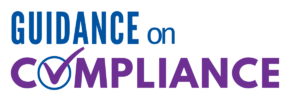The latest Supreme Court term has been one of incredibly consequential decisions. Rulings regarding gun rights, immunity, and abortion access grabbed headlines for months. Yet, the most important ruling for the healthcare space writ large is the case of Loper Bright v. Raimondo, which involved regulations in the commercial fishing industry. What does a ruling about fishery regulation have to do with the Centers for Medicare and Medicaid Services (CMS)? In this situation, nearly everything.
The key matter in the Loper Bright case centered on a decades old legal test, oft referred to as “Chevron Deference.” This ruling dates to the 1984 case of Chevron U.S.A., Inc. v. Natural Resources Defense Council, Inc., in which the Courts held that deference should be given to the expertise of regulatory agencies when deciding the extent of their powers to interpret statutes in their assigned jurisdictions. In practice, this meant that career government employees, with deep subject matter experience, would be the primary decision makers on ambitious regulatory matters (as opposed to an elected official or judicial authority.)
“Well, okay. What does this have to do with how I operate my healthcare provider organization?” you may ask.
Let’s look one recent, and important, example.
Recently, CMS enacted new, stricter standards as it relates to nursing staff rations in long term care settings. The industry has decried these ratios as being unfair and untenable, especially without increases to Medicare and Medicaid payments and funding. These staffing ratios were not mandated by a specific piece of legislation. Rather, they were developed within the executive branch and implemented by CMS under their regulatory authority. This change was undertaken by the agency as a statutory interpretation. The Loper Bright ruling holds that such interpretation is not the prerogative of the agency; rather, such interpretation is fundamentally the role of the judicial branch. Since a judge has not weighed in to determine if the staffing requirements are within the bounds of the statute, the CMS regulations on staffing could very easily come into question – and they likely will, very quickly.
The Supreme Court has made it clear that they would prefer to see the legislative branch enact specific laws and regulations in place of allowing agencies to interpret their intentions and meanings. In those situations where an interpretation is needed, the Court ruled that the judicial branch should be the one to handle that question. In the healthcare space, this means that legislators and judges will likely be making critical regulatory decisions regarding the delivery of healthcare services in place of agency employees. Regardless of whether you agree or disagree with this decision, the resulting implications are enormous.
Every regulation is now able to be called into question. From the broadest possible interpretations, down to the minutia of documentation and care delivery, every CMS ruling is likely to be challenged to force the agency to “show its work” in the legislative authority that underpins the regulatory decision. While this will not immediately impact the delivery of services, the chances that key regulations are going to dramatically change within the next three to five years is nearly certain.
These decisions are likely to be complicated by the United States’ judicial structure, wherein individual circuit courts rule differently on key decisions. So, while a regulation might be struck down in the Northeast, a judge in the Southwest may have a different take on it entirely. Thus begins the long march to the Supreme Court for final review. Such situations could make it very difficult for large, national providers to keep up with the regulations across their practices.
Additionally, monies spent on lobbyists and political action are going to soar. With the courts looking to the legislative branch to take a more impactful role in defining regulations, industry groups (and those opposed to them), are going to need to spend more time educating legislators on the issues at hand. Likely, this will also result in increased legislative activity that originates from lobbyists and special interest groups looking to establish specific regulations through legislative actions. It can be very easy to bury a minute piece of regulatory authority into a large, omnibus bill that could have significant impact across all of healthcare. Fighting such an action is going to take an incredible number of resources. You can expect trade groups to use these actions to notch up their fundraising efforts, both to protect providers and to improve their influence amongst legislative officials.
While Loper Bright might not impact your compliance program today, or maybe even tomorrow, it is absolutely going to change the delivery of healthcare for years to come. Providers are going to need to spend extra resources to keep up to date on the regulations (or de-regulations as the case may be) as CMS’s decisions are questioned in court.
Welcome to a Post-Chevron world.
LW Consulting, Inc. (LWCI) offers a comprehensive range of services that can assist your organization in maintaining compliance, identifying trends, providing education and training, or conducting documentation and coding audits. For more information, contact LWCI to connect with one of our experts!

